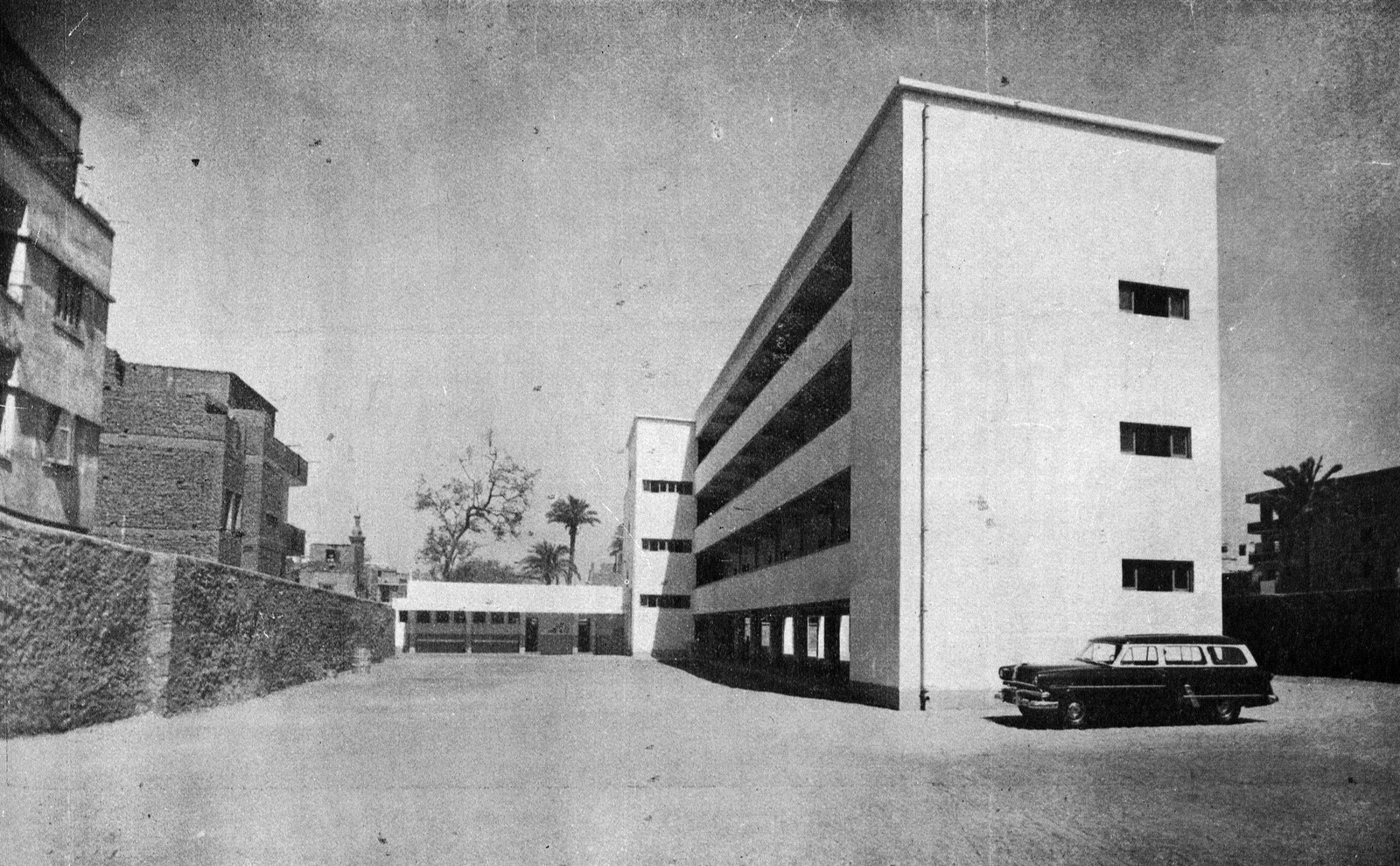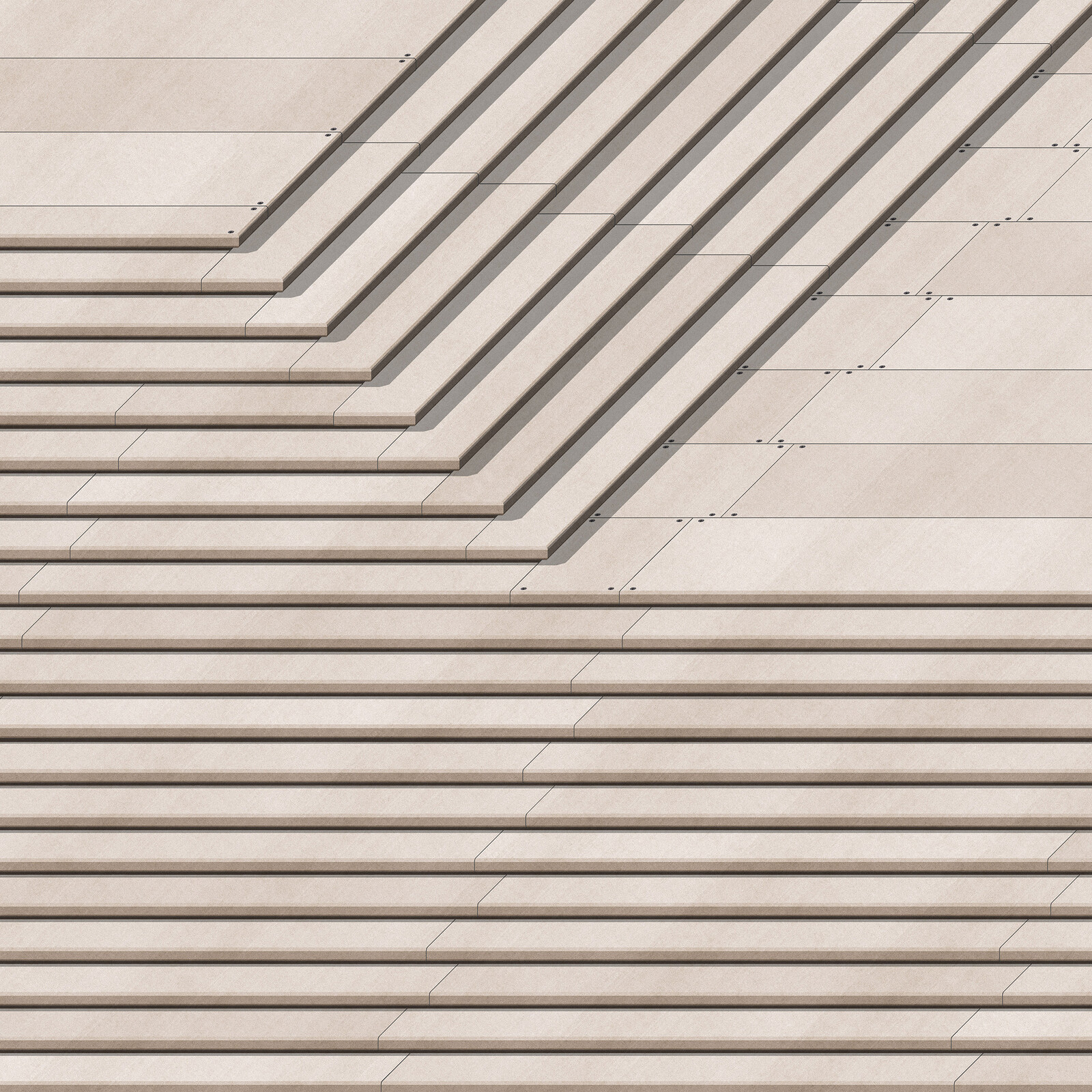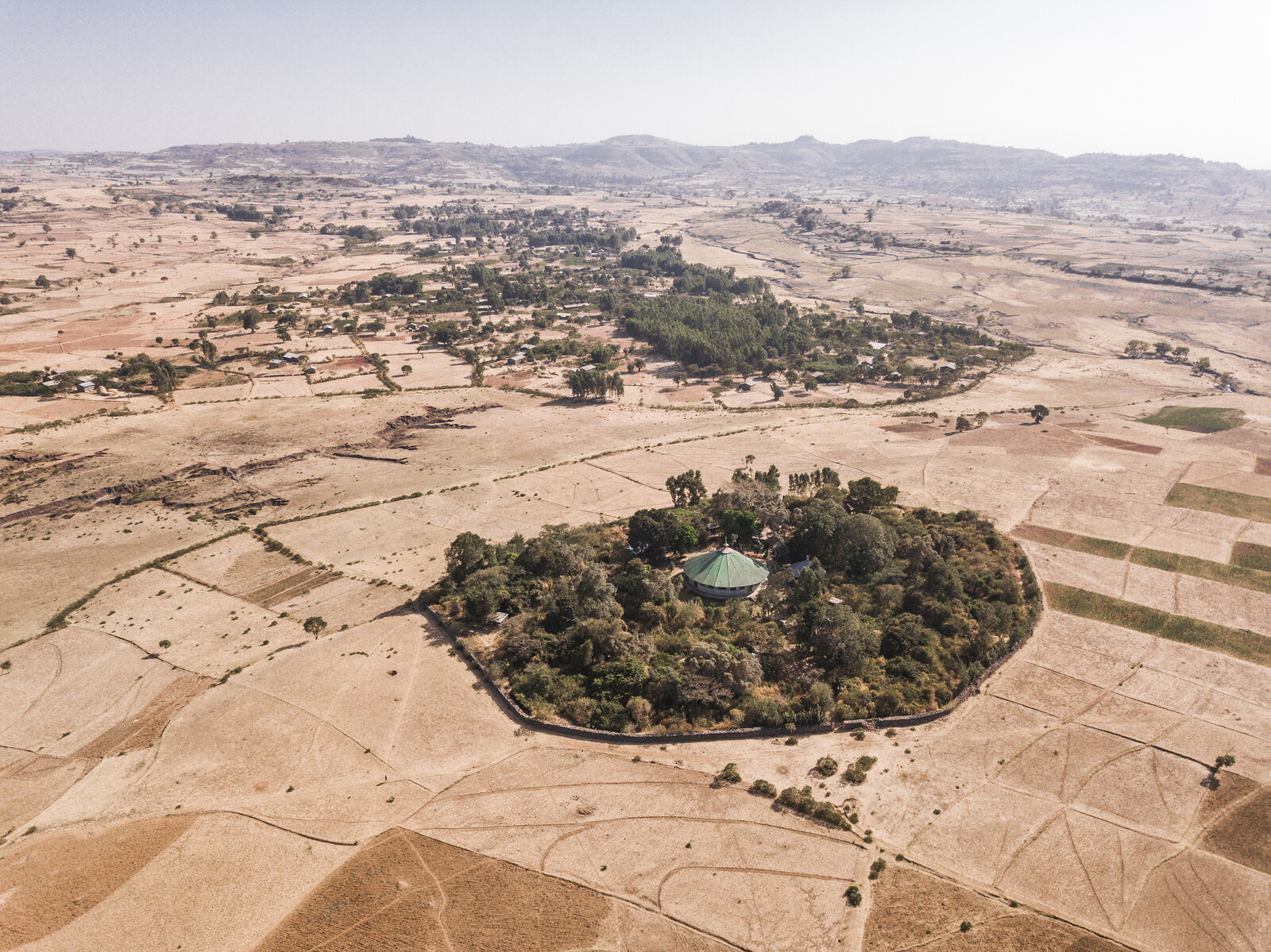In 1954, a young Egyptian girl living in a village hundreds of kilometers away from Cairo could start her primary education in a brand-new school building, one that was distinctly modern, with cement floor tiles and whitewashed concrete walls. She may have been the first child in her family to access free education provided by the state. The school building, based on Model 10, was built on previously agricultural land acquired by the state for the “public good” and surrounded by a metal fence covered with bougainvillea. The school had been designed by architects and engineers from Cairo who surveyed the site less than a year earlier and quickly implemented a standardized school design. The two-story building contained thirteen classrooms for boys and girls, a meeting room, teacher rooms, a prayer room, storage rooms for food and school supplies, as well as gender-segregated bathrooms housed in a separate structure. Classrooms measured five-and-a-half by eight meters and could hold forty-two students with their desks lined up facing the blackboard. Above hung a picture of President Nasser, the ultimate figure of authority and a daily reminder to students that they were living in a new era. The meeting room was lifted on slender columns with a shaded play area below, and the classrooms all faced north, with large windows for cross ventilation and natural light. This may have been the first time the student interacted with peers of the opposite gender, and her future was promised to be vastly different from that of her illiterate mother’s. She was one of 186,000 students in 372 new schools completed across Egypt for the 1954–1955 school year by Muʾassasa Abniyyat al-Taʿlim, the School Premises State Foundation (SPSF).1
Historian Meriam Belli suggests that “the 1950s–60s witnessed an outstanding quantitative growth in educational infrastructures and literacy, especially in the provincial and rural areas neglected by the ancien régime. ‘Educative Nasserism’ attempted to reduce broad gaps in the spatial hierarchy, such as between north and south or urban and rural milieus.”2 Though inequalities certainly endured, “populations with low initial rates of literacy benefited the most from these policies.”3 But for this to happen, new facilities across the vast geography of Egypt had to be constructed quickly, and so architects provided the plans for standardized school models, such as Model 10, which created modern spaces for education in cities and rural areas.
Alongside such architectural advancements, the Egyptian state under Nasser placed a significant emphasis on its education policy. Standard accounts assume that the Nasser regime introduced new education policies immediately after taking power in 1952. However, recent scholarship has demonstrated that it still relied on the structures of the old regime of King Farouk. Existing educational structures were not immediately overturned, as syllabi, textbooks, and methods of instruction from the old regime—as well as existing networks and advisers—continued to be in use throughout much of the fifties. Belli suggests that “Nasserist polices carried to their conclusion the series of measures undertaken under the khedives. These were part of a reformist ‘globalized’ and ‘transnational’ movement rooted in the past century. However, the Free Officers [the movement that led the 1952 Revolution] pushed faster and further than the monarchy. Like the Third Republic in France, Nasser’s Egypt did not invent the school; it adopted it, refashioned it to its needs and views especially in a cultural intent.”4
The result is an education system that tolerated some hybridity in its earlier stages, combining old and new pedagogical approaches, forces, and structures of power and authority. Education was instrumentalized by the new state as a political tool to transform national consciousness and collective visions of the future of Egyptian society—made visible through the enormous school building enterprise of SPSF.
Primary education in Egypt had been made compulsory by law in 1923. However, there had been no serious effort to provide the building capacity to absorb the country’s young students, particularly in rural areas. A 1949 law had effectively made primary education free, and the Egyptian Ministry of Education had to deploy resources and facilities in order to suit the needs of its growing student population.
Yet state-funded school building projects prior to the 1952 Revolution were curbed by high overhead costs—each new school cost the state 25,000 to 40,000 Egyptian pounds. This high cost limited the number of schools that could be built, hence the need for standardization.
One of the first decrees issued by the Nasser regime established the SPSF as an autonomous institution with the sole purpose of building schools across Egypt, 400 annually.5 The number of enrolled students would therefore increase from 1,611,000, during the 1951–1952 school year, to 2,104,000 by 1957–1958.6
The SPSF had a board that included ministers of planning, finance, education, public works, professors of architecture from Cairo University, and others. A team of specialists was established to determine the locations of new schools across the country.
While inspired by international architectural developments of the time, the schools’ standardized modernist and functionalist design served the purpose of the centralized state’s provision of universal primary education across the country, regardless of local specificities.7 From the point of view of administrators and government officials, such a program was an efficient way to assimilate a new generation of Egyptian youth into the revolutionary state’s vision of nationalism, socialism, and revolution. Architects participating in the program strongly believed in the power of architecture to create new citizens. Architect Tawfiq ʿAbd al-Gawwad, for example, wrote:
A noble outcome of the revolution, and one of the most important goals of the revolution, is to provide education with ease to millions of the children of the nation in new healthy schools, not only to learn reading and writing but also to be transformed into good citizens [muwatenin salhin], strong and capable of working, with hearts full of love for Egypt.8
ʿAbd al-Gawwad thus suggests that architects could play an integral role in the building of not only a future Egypt, but also future Egyptians, and presented his role as an opportunity for architects to actively serve a wider segment of the population under the auspices of the state. One of the clearest ways in which the state attempted to transform society via education was by expanding the education of women, for which Nasser was greatly responsible.9
Yet it took some time for the accompanying textbooks to be rewritten. While Nasser’s regime “attached considerable importance to the curricula as a primary means of disseminating the values, symbols and goals of the July Revolution,” the majority of textbooks were not produced right away.10 It was only in 1958/1959—at the same time as Egypt’s union with Syria—that revised textbooks were published for all subjects, and they remained in use for much of the sixties and seventies. Once available, they were adopted across the country, regardless of the school’s urban or rural setting, the socioeconomic status of its area, or its local history and traditions.
In terms of pedagogy, Egyptian government officials were very much influenced by the international progressive education movement, whose practices encouraged a more child-centered approach and a departure from rote memorization. That is, while the Ministry of Education produced new textbooks that were meant to indoctrinate the student population, it continued to advocate for experience-based learning, activities in the classroom, and critical thinking. While there isn’t sufficient evidence to suggest that such practices were applied in reality, they were very much part of the national pedagogical debate—as is evident from a number of reports published by the Ministry in the fifties and sixties. They were, however, considered in the overall design of the new schools. All of this delineates a rich and complex learning landscape, and one which tolerated a number of paradoxes.
The SPSF schools remained in place until 1992, when many of them failed to withstand the force of that year’s earthquake. While the earthquake did not destroy all schools, many buildings suffered major damage, which made them unsafe for occupants. A new school building program, this time spearheaded by the military, eventually replaced most of the SPSF schools by the end of the nineties. For four decades, millions of Egyptian youth had received their education in these once modernist, but now crumbling, buildings. Pictures of presidents that hung in every classroom had changed only twice. The schools had grown more crowded and less maintained, as the future-oriented nationalism of the fifties and sixties faded into the past.
Tawfiq Abdel Gawwad, “School Premises State Foundation and the First Stage of Schools” in Majallat al-Emara, No. 2, 1957 {in Arabic}.
Mériam N. Belli, An Incurable Past: Nasser’s Egypt Then and Now (Gainesville, 2013), 55.
Ibid., 57.
Ibid., 28.
Keith Wheelock, Nasser’s New Egypt: A Critical Analysis (New York, 1960), 112.
United Arab Republic: The Yearbook, 1963 (Cairo, 1963), 103.
This process, of course, occurred in many countries. In the case of revolutionary Egypt, standardized curricula and school buildings can be understood as part of a broader effort to define a “standard citizen.” See Catherine Burke and Ian Grosvenor, School (London, 2008), 19.
Gawwad, 8.
Belli, 28.
Yoram Meital, “School Textbooks and Assembling the Puzzle of the Past in Revolutionary Egypt,” Middle Eastern Studies, 42, no. 2 (March 2006): 255.
Conditions is a collaboration between the Sharjah Architecture Triennial and Africa Is a Country, Ajam Media Collective, ArtReview, e-flux architecture, Jadaliyya, and Mada Masr, within the context of its inaugural edition, Rights of Future Generations.



.jpg,1600)
.jpg,1200)





